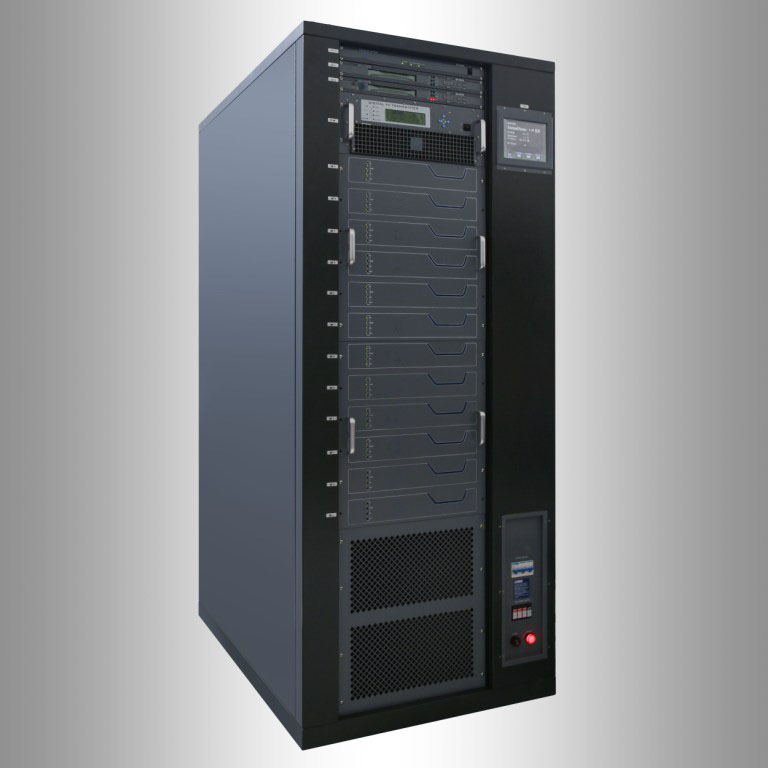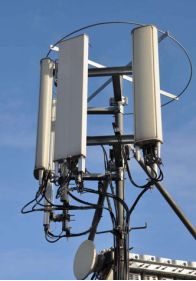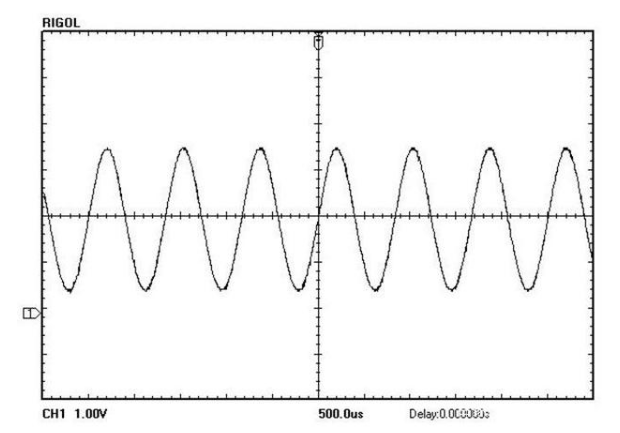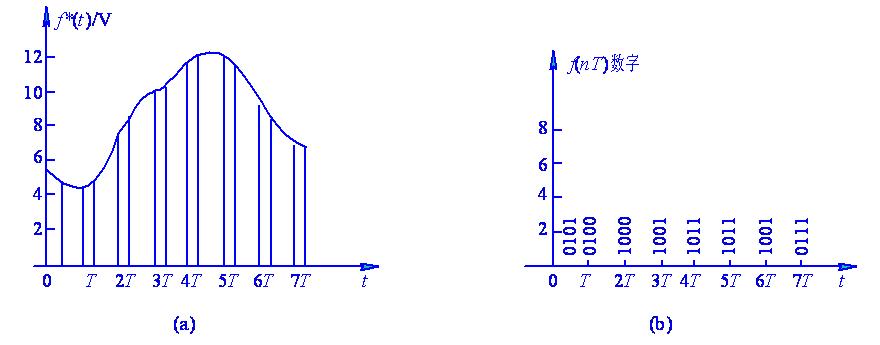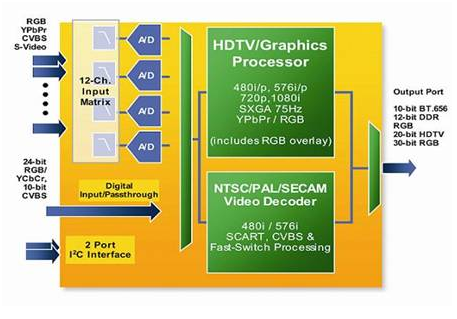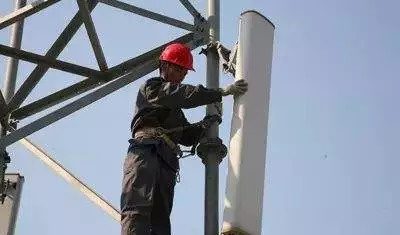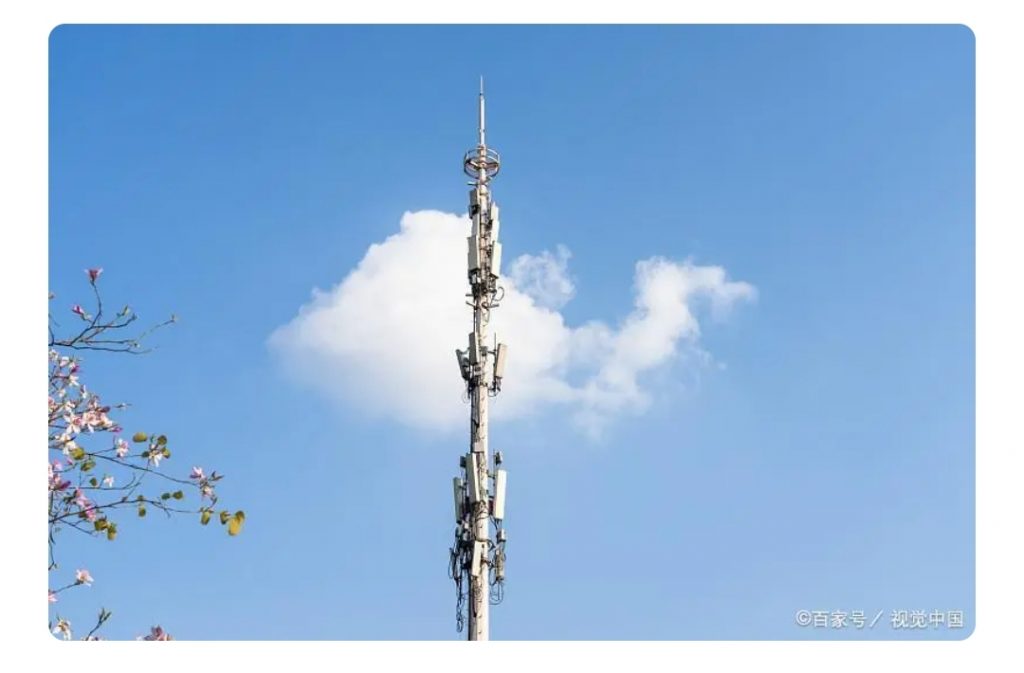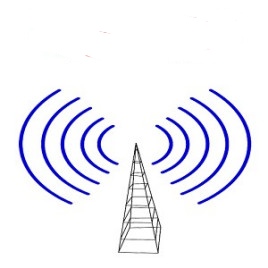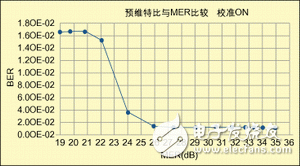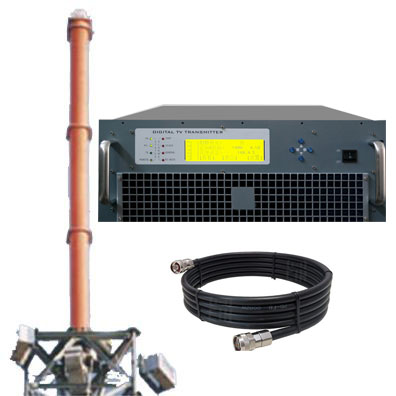What is digital TV?
Digital TV (Digital TV) is a digital TV broadcasting system that digitizes the entire broadcast link from the collection, editing, dissemination, and reception of TV signals. Digital TV uses various image formats in the MPEG standard to compress the average bit rate of images and audio signals under the current analog TV system to about 4.69-21Mbps, and its image quality can reach the quality level of TV studios and film quality. The horizontal definition of the image reaches more than 500-1200 lines, and adopts AC-3 sound signal compression technology to transmit 5.1-channel surround sound signals.
Classification of digital television
According to the definition of clear images, digital TV includes three types: digital high-definition TV (HDTV), digital standard-definition TV (SDTV) and digital regular-definition TV (LDTV). The horizontal resolution of HDTV images is greater than 800 lines, and the image quality can reach or approach the level of 35mm wide-screen movies; the horizontal resolution of SDTV images is greater than 500 lines, mainly corresponding to the resolution level of existing TVs, and its image quality It is at the studio level; the horizontal resolution of LDTV images is 200-300 lines, mainly corresponding to the resolution level of existing VCD.
According to the signal transmission method, digital TV can be divided into three categories: terrestrial wireless transmission digital TV (terrestrial digital TV), satellite transmission digital TV (satellite digital TV), and cable transmission digital TV (cable digital TV).
According to the classification of product types, digital TV can be divided into digital TV monitors, digital TV set-top boxes and integrated digital TV receivers.
According to the aspect ratio of the display screen, digital TV can be divided into two types: 4:3 aspect ratio and 16:9 aspect ratio.
Key Technologies and Standards of Digital TV System
the
Source Codec Technology of Digital TV
Video codec technology
Compared with analog TV, digital TV, especially digital high-definition TV, is the most difficult part in the realization process of video signal compression. Under the display format of 1920×1080, the code rate after digitization is as high as 995Mbit/s in transmission, which is much larger than the amount of information transmitted in current analog TV. Therefore, the image of digital TV cannot be transmitted directly like the image of analog TV, but requires an additional compression and encoding process. The main function of video coding technology is to complete image compression, so that the signal transmission volume of digital TV is reduced from 995Mbit/s to 20-30Mbit/s.
Audio codec technology
Same as video codec, the main function of audio codec is to complete the compression of sound information. After the sound signal is digitized, the amount of information is much larger than that of the analog transmission state, so the sound of digital TV cannot be transmitted directly like the sound of analog TV, but requires an additional compression and encoding process.
Relevant standards of source codec
Internationally, three standards have been formulated for digital image coding, namely H.261 mainly used for video conferencing, JPMG standard mainly used for still images and MPEG standard mainly used for continuous images.
In terms of HDTV video compression codec standards, the United States, Europe and Japan have differences, and all adopt the MPEG-2 standard. MPEG-compressed information can be processed by computers and distributed on existing and future television broadcast channels. In terms of audio coding, Europe and Japan have adopted the MPEG-2 standard; the United States has adopted Dolby’s AC-3 solution, and MPEG-2 is the backup solution. However, with the advancement of technology, MPEG-2, which was completed in 1994, is now becoming more and more backward. Internationally, MPEG-4 AVC is being considered to replace the current MPEG-2.
In China, China’s digital audio and video codec standard working group has formulated the AVS standard for digital TV and high-definition laser disc players. The standard is said to have independent intellectual property rights and is fully compatible with the MPEG-2 standard. It is also compatible with the basic layer of the MPEG-4 AVC/H.264 international standard. Its compression level is said to be 2-3 times that of the MPEG-2 standard. Compared with MPEG-4 AVC, the more concise design of AVS reduces the complexity of chip implementation.
the
Multiplexing System of Digital TV
The multiplexing system of digital TV is one of the key parts of HDTV. From the point of view of the flow of information at the sending end, it processes and composites the data bit streams sent by encoders such as video, audio, and auxiliary data into a single-channel serial bit stream, which is then sent to channel coding and modulation. The receiving end is the exact opposite of this process. In terms of HDTV multiplexing transmission standards, the United States, Europe, and Japan have no differences, and all adopt the MPEG-2 standard. The United States already has a dedicated chip for MPEG-2 demultiplexing.
the
Channel codec and modulation and demodulation of digital TV
The purpose of digital TV channel codec and modulation and demodulation is to improve the anti-interference ability of the signal through error correction coding, grid coding, equalization and other technologies, and to place the transmission signal on the carrier wave or burst through modulation to prepare for the launch. At present, the standards and standards of digital TV in various countries cannot be unified.
It mainly refers to the differences in this aspect between countries, specifically including differences in error correction, equalization and other technologies, differences in bandwidth, and especially differences in modulation methods.
Common modulation methods for digital transmission:
Quadrature Amplitude Modulation (QAM): High modulation efficiency requires high signal-to-noise ratio of the transmission path, suitable for cable TV cable transmission.
Keyed phase-shift modulation (QPSK): High modulation efficiency requires low signal-to-noise ratio of the transmission path, suitable for satellite broadcasting.
Vestigial sideband modulation (VSB): Good anti-multipath propagation effect (that is, good ghost elimination effect), suitable for terrestrial broadcasting.
Coded Orthogonal Frequency Division Modulation (COFDM): Good anti-multipath propagation effect and co-channel interference, suitable for terrestrial broadcasting and co-frequency network broadcasting
The main existing digital TV standard in the world
the
American Digital Television Standard ATSC
American terrestrial TV broadcasting still accounts for more than half of its TV business so far. Therefore, when the United States develops high-definition TV, the first consideration is how to spread it through the terrestrial broadcasting network, and proposes a standard based on digital high-definition TV- ATSC (Advanced Television System Committee Advanced Television System Committee). The bandwidth of the US HDTV terrestrial broadcasting channel is 6MHZ, and the modulation adopts 8VSB. It is expected that satellite broadcast TV in the US will use QPSK modulation, and cable TV will use QAM or VSB modulation.
The ATSC digital television standard consists of four separate layers with clear interfaces between them. The highest layer is the image layer, which determines the form of the image, including pixel array, aspect ratio and frame rate. Next is the image compression layer, using the MPEG-2 compression standard. Next is the system multiplexing layer, specific data is included in different compressed packages, using the MPEG-2 compression standard. Finally, the transport layer determines the modulation and channel coding schemes for data transmission. As for the terrestrial broadcasting system, the 8-VSB transmission mode developed by Zenith Company is adopted, and the transmission rate of 19.3Mb/s can be realized on the 6MHz terrestrial broadcasting channel. This standard also includes the 16-VSB transmission mode suitable for the high data rate of the cable TV system, which can realize the transmission rate of 38.6Mb/s in the 6MHz cable TV channel.
The following two layers share common data transmission. The upper two layers determine the specific configuration that operates on the basis of ordinary data transmission, such as HDTV or SDTV; also determine the specific image formats supported by the ATSC standard, a total of 18 types (HDTV 6 types, SDTV 12 types), of which 14 types use progressive scan Way.
Among the 6 HDTV formats, because the 1920×1080 format is not suitable for progressive scanning at 60 frames per second in a 6MHz channel, it is replaced by interlaced scanning. The 640×480 image format of SDTV is the same as the VGA format of the computer, which ensures the applicability to the computer. Among the 12 SDTV formats, 9 adopt progressive scanning, and 3 are reserved for interlaced scanning to adapt to existing video systems.
In addition, ATSC has also developed and approved a separate standard for use in countries adopting 50Hz frame rate. The HDTV format has the same pixel array, but with frame rates of 25Hz and 50Hz; the SDTV format has a vertical resolution of 576 lines and a different horizontal resolution; a 352×288 format is also included to accommodate the necessary windowing settings.
the
European Digital Television Standard DVB
The European digital TV standard is DVB, namely Digital Video Broadcasting, digital video broadcasting. Since 1995, Europe has released the standards of digital TV terrestrial broadcasting (DVB-T), digital TV satellite broadcasting (DVB-S), and digital TV cable broadcasting (DVB-C). The first consideration of European digital TV is the satellite channel, which adopts QPSK modulation. European terrestrial digital TV adopts COFDM modulation with 8M bandwidth. European cable digital TV adopts QAM modulation.
DVB-T (ETS 300 744) is the standard for digital terrestrial television broadcasting system. This is the most complex DVB transmission system. The transmission capacity of terrestrial digital TV transmission is equivalent to the cable TV system in theory, and the coverage in this area is good. Using coded orthogonal frequency division multiplexing (COFDM) modulation, 4 sets of TV programs can be transmitted within 8MHz bandwidth, and the transmission quality is high; but the reception cost is high.
DVB-S (ETS 300 421) is a digital satellite broadcasting system standard. Satellite transmission has the characteristics of wide coverage and large program capacity. The modulation of the data stream adopts the quadrature phase-shift keying modulation (QPSK) mode, and the working frequency is 11/12GHz. When using the MPEG-2MP@ML format, if the user end reaches CCIR 601 studio quality, the code rate is 9Mb/s; if it reaches PAL quality, the code rate is 5Mb/s. The transmission rate of a 54MHz transponder can reach 68Mb/s, which can be used for multiplexing of multiple programs. The DVB-S standard is adopted by almost all satellite broadcasting digital TV systems. my country has also adopted the DVB-S standard.
DVB-C (ETS 300 429) is the standard for digital cable TV broadcasting system. It has three modulation modes of 16, 32, and 64QAM (quadrature amplitude modulation), and its operating frequency is below 10GHz. When 64QAM is used, the transmission code rate of a PAL channel is 41.34Mb/s, which can be used for multiplexing of multiple programs. The front end of the system can obtain signals from satellite and ground transmission, and a cable set-top box is required at the terminal.
the
Standard ISDB for Japanese digital TV
The Japanese digital TV first considers the satellite channel and uses QPSK modulation. And in 1999 released the digital TV standard – ISDB. ISDB is a digital broadcasting system standard developed by Japan’s DIBEG (Digital Broadcasting Experts Group Digital Broadcasting Expert Group). It uses a standardized multiplexing scheme to send various types of signals on a common transmission channel. The signal used can also be sent out through various transmission channels. ISDB has the characteristics of flexibility, expansibility, commonality, etc., and can flexibly integrate and send multi-program TV and other data services.
the
Comparison of DVB and ATSC
The main differences between the European DVB standard and the American ATSC standard are as follows:
Square Pixels: “Square Picture Eelements” (Square Picture Eelements) were adopted in the ATSC standard because they are more suitable for computers; while the DVB standard was not adopted at first, but has also been adopted recently. In addition, a wide range of video image formats are also adopted by DVB, while ATSC does not make mandatory regulations on this.
System layer and video coding: Both DVB and ATSC standards adopt the system layer and video coding of MPEG-2 standard. However, since the MPEG-2 standard does not specify the video algorithm in detail, the implementation scheme can be different, which is different from the two standards. irrelevant.
Audio coding: The DVB standard adopts the audio compression algorithm of MPEG-2; while the ATSC standard adopts the audio compression algorithm of AC-3.
Channel coding: the scrambler (Radomizers) of the two uses different polynomials; the Reed-Solomon forward error correction (FEC) coding of the two uses different redundancy, the DVB standard uses 16B, while the ATSC standard uses 20B; The interleaving process (Interleaving) of the two is different;
In the DVB standard, Trellix coding has different optional rates, while in the ATSC standard, terrestrial broadcasting uses a fixed 2/3 rate Trellix coding, and cable TV does not need to use Trellix coding.
Modulation technology: The DVB standard in the satellite broadcasting system uses QPSK, while the ATSC standard does not involve satellite broadcasting. The DVB standard in the cable TV system adopts the optional 16/32/64QAM, while the ATSC standard adopts 16VSB, which are completely different. The DVB standard in the terrestrial broadcasting system adopts COFDM (2K or 8K carriers) with QPSK, 16QAM or 64QAM; while the ATSC standard adopts 8VSB.
the
Comparison of Three Digital Terrestrial Broadcasting Systems
ISDB-T is very similar to European DVB-T. It can be said that it is a modified European scheme. The transmission scheme is still COFDM. It uses the same coding method and modulation method. It is also divided into two modes: 2K and 8K. Because the radio frequency bandwidth of Japanese TV is 6MHz, the number of carriers and carrier spacing are different. The comparison of ISDB-T with DVB-T and ATSC ATV is as follows:
the
Current status of DVB, ATSC and ISDB members
It is reported that DVB members have reached 265 (from 35 countries and regions), mainly concentrated in Europe and all over the world, including my country’s Broadcasting Science Research Institute and TCL Electronics Group. ATSC has 30 members, including 20 domestic members in the United States, 10 members from 7 countries including Argentina, France, and South Korea, and the Chinese Academy of Broadcasting Science also participated in the ATSC organization. The ISDB Steering Committee has 17 members and 23 other members, all of whom are electronic companies and broadcasting organizations in Japan.
